Kaptaan marches again: What next?
PTI has not always achieved what its marches and sit-in aimed to achieve
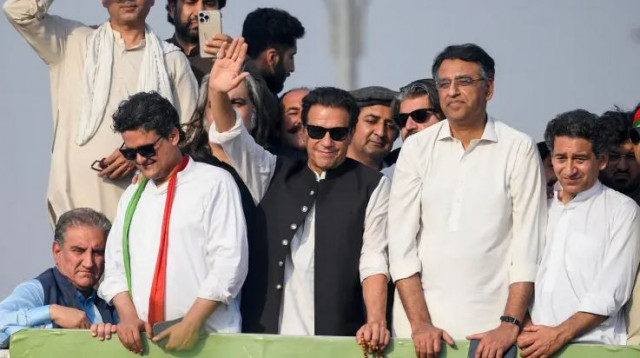
Pakistan Tehreek-e-Insaf (PTI) chairperson Imran Khan is famed for his call to long marches and sit-ins when in the opposition.
The PTI marches are usually swarmed by thousands of supporters, some simply to get a glimpse of their ‘Kaptaan’. However, the party has not always achieved the goals set out for its marches.
Here is a look at Imran Khan’s calls to the most historic PTI marches and their eventual outcome and impact.
2014 – Azadi March
In 2013, Imran called upon the Election Commission of Pakistan (ECP) and the Supreme Court to probe the thumbprint impressions of ballots of four National Assembly constituencies in an effort to ascertain the rigging allegations in the May 11, 2013 polls.
“Listen to the people who are on the roads now. They want fingerprints’ verification in the constituencies where polls were rigged on the election day,” Imran said while directly referring to then chief justice.
His calls for rigging were met by government inaction. Soon after, the SC also dismissed the petition filed by the PTI and stated that it required more evidence to annul the election.
Read ISI chief speaks publicly on political crisis
On April 22, 2014, Imran announced the party’s Azadi (freedom) march after allegations of vote-rigging in the Pakistan Muslim League-Nawaz (PML-N) dominated 2013 general elections had faced no investigation.
The march began at Imran’s residence in Lahore on August 14 and soon began moving towards Islamabad.
The tumultuous, conflict-ridden march was joined by former politician Tahir-ul-Qadri and his party the Pakistan Awami Tehreek (PAT). It soon turned into a dharna (sit-in) in the federal capital on August 16.
Outcome
The sit-in, which lasted 126 days, was called off on December 17, 2014. The move came after heavily armed terrorists massacred 134 students at the Army Public School (APS) in Peshawar on December 16.
“Pakistan cannot afford [our] opposition in these testing times… we have to end our sit-in,” Imran said in his last address.
He urged the formation of a judicial commission to investigate the rigging allegations and asked then premier Nawaz to do “what the nation wanted”.
Imran’s party has been in power in Khyber-Pakhtunkhwa (K-P) since 2013. He was met with the wrath of the grieving parents, who he visited a month after the attack due to his wedding. He was criticised for his inaction despite being an MNA.
However, the PTI chief observed a “major achievement” after a judicial commission was formed in 2015 to probe the rigging.
On July 23, 2015, the inquiry committee rejected the PTI’s allegations of organised rigging in 2013. Imran said he accepts the verdict of the inquiry commission but would be able to comment only after seeing the report.
2016 – Tehreek-e-Ehtesaab
Following the controversy raised by the Panama Papers which alleged that Nawaz Sharif and his family were corrupt and highlighted the family’s offshore properties, Imran announced his Ehtesaab (accountability) march.
On July 31, 2016, he claimed that “the march will be a defining moment in the history of Pakistan”. It began on August 7, 2016, in Peshawar.
Chairman PTI @ImranKhanPTI in #Peshawar to lead #Tehreek_e_Ehtesab from the front like a real and courageous leader pic.twitter.com/VeRFD9tWlu
— PTI Lahore (@PTIOfficialLHR) August 7, 2016
On-ground reporters stated that most people gathered at the PTI’s Tehreek-e-Ehtisab rally were just there for entertainment and to catch a glimpse of the party chairperson. Many admitted they were unaware of the basic purpose of the rally.
Pakistan Peoples Party (PPP) co-chairman Bilawal Bhutto Zardari expressed his support for PTI’s accountability campaign by wishing “good luck” to those taking part in Tehreek-e-Ehtesab.
“Democratic right to protest should be encouraged not punished,” Bilawal had tweeted on the day.
Good luck to those protesting 4 #Tehreek_e_Ehtesab democratic right to protest should be encouraged not punished. 1/2
— BilawalBhuttoZardari (@BBhuttoZardari) August 7, 2016
Outcome
On August 31, 2016, the Supreme Court dismissed Imran’s “frivolous” constitutional petition for the disqualification of Nawaz and other lawmakers in the wake of the Panama Papers controversy.
The PTI then filed references in the National Assembly (NA) on September 6, 2016, seeking the disqualification of Nawaz in the NA. These were later dismissed by then NA speaker Ayaz Sadiq.
Sadiq had said the speaker's office was neither a court nor an investigation agency. However, he sent similar references against two leaders of the PTI to the ECP for action.
The march eventually fizzled out after the PTI and its supporters stormed Raiwind, the town of Nawaz Sharif’s residence in Lahore on September 30, 2016.
A reason for the end of the march was the escalating tensions between Pakistan and India. The two countries were involved in a tense verbal and diplomatic spat, following attacks and strikes from either side.
May 2022 – Haqeeqi Azaadi March
Prior to the call, the PTI geared up mobilisation of its supporters to make the march a success by holding conventions of professionals and workers with several party leaders in attendance.

Party chief Imran Khan announced on May 22 that his party would kick off its much-awaited long march against the “imported government” to the federal capital on May 25.
The PTI chief indicated that the march would convert into a sit-in. He said the marchers would stay in Islamabad until their demands were met.
He called for free and fair elections. “If the nation brings the current government back to power then I will accept it. However, no other country would be allowed to impose them on us.”
The former premier reiterated that there was a foreign conspiracy against Pakistan from the US, which he believed had led to his ouster in April through a no-confidence motion tabled in the National Assembly.
Read More PTI questions military’s ‘apolitical’ credentials
On May 25, Imran and his supporters marched from Lahore, where the PML-N government had given a “free hand” to Punjab police. They made their way to Islamabad and reached Red Zone but not without difficulties.
PTI followers were met with immense chaos and heightened security which failed to contain them as they managed to cross all barriers and reached near D-Chowk after setting some trees and public property on fire in the Blue Area of the federal capital.
Outcome
During alleged police action at Bhatti Chowk, a former PTI councilor, Faisal Abbas, fell from the bridge and died of serious injuries during the protests. Imran blamed PML-N ‘goons’ for the incident.
There were several altercations between PTI supporters and LEAs.
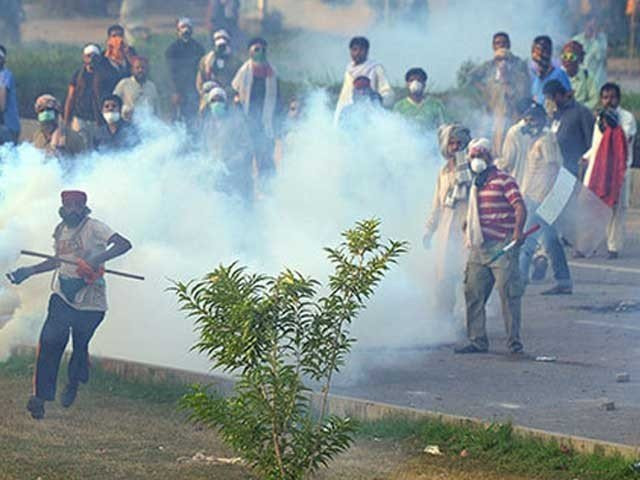
A scene of clashes between PTI and the police. FILE
Fearing bloodshed, and due to the mayhem already caused – which included army personnel being called to protect the Red Zone – Imran ended his march in just one day. However, he gave the incumbent government an ultimatum; to announce early elections within six days or have the “entire nation” return to the capital.
Meanwhile, the Islamabad police filed separate cases against 150 people, including Imran Khan, Asad Umar, Asad Qaiser and other party leaders, over allegations of arson and vandalism.
The incumbent government also moved the SC under claims of contempt of court, after Imran insisted that his supporters converge at D Chowk despite clear instructions from the apex court. The SC had mandated that the PTI could only hold its Azadi March protest near Peshawar Mor between the H-9 and G-9 areas of Islamabad.
The contempt case is still underway.
October 2022 – Azadi March
After the short march to Islamabad in May and the federal government’s refusal to announce early elections, the PTI chief planned to hold the Azadi March once again.
The former premier eluded announcing his most recent long march which would demand that the incumbent government call general elections early.
On October 25, Imran finally declared that the PTI’s long march would start on October 28 (Friday).
Addressing a news conference in Lahore, the PTI chief said the long march would start from Lahore’s Liberty Chowk at 11am.
“I’m announcing that the long march will start on Friday from Liberty Chowk”-@ImranKhanPTI pic.twitter.com/LdxTcxPs6G
— PTI (@PTIofficial) October 25, 2022
He claimed that he was constantly being told that the country was in trouble, and he should not stage the long march at this time. However, he added that the situation had reached a point where the people were demanding that the “imported” government should be removed.
Political tensions are growing in the country as Islamabad is on high alert after the call to march. The government has started preparations to deploy thousands of security personnel to block Imran's supporters from entering the capital.
According to officials, the interior ministry has already decided to deploy around 30,000 police, rangers, and para-military troops in Islamabad and not allow protesters to enter the red-zone area near the parliament building.
Prior to his long march, Imran Khan observed that Prime Minister Shehbaz Sharif seemed to be in “low spirits” after the announcement of the date of the long march.
Addressing supporters in Sialkot, he vowed to “free the nation” from the “gang of thieves”.
“A gang of thieves and slaves of America were imposed upon us. Our fight is against these thieves and [mission is to] bring real freedom to the country,” he said.
What will be the impact of the latest march
Dr Rasul Bakhsh Raees, an author and commentator on politics and security, said that the march “is going to be a big confrontation, like never seen before. Imran is up against the establishment, it is now in the open, no secrets anymore”.
He furthered that the odds were stacked against Imran and questioned if he would succeed where others have failed.
The remarks come after senior PTI leader Asad Umar said that the party had a constitutional right to criticise the military’s decisions, saying that the latter never said anything to weaken the institution of the army.
Politcal analyst and think-tank CEO Mosharraf Zaidi said, “Imran Khan’s evolution from being an implement of military interventions in politics to being the victim of such an alleged intervention is an interesting one.”
He predicted that the “upcoming long march won’t dramatically alter his popularity—which remains very high” but that the march would not “bring about the fall of the government”.
According to Zaidi, the march “will further erode the government’s ability to govern”.
Read Also Imran admits he offered army chief extension to save his govt
“If there is one thing Imran has demonstrated consistently since 2011, it is that he believes that Pakistan must only be governed by him. All others do not merit the chance to do so free of debilitating public pressure.”
He added that “the challenge for the government is whether it can govern effectively, whilst under the burden of such protests and a very deep divide between Imran and the military leadership.”
Dr Umair Javed, a policy consultant and political science professor, said that “this long march is targeting the sitting government and the military more explicitly, but it is unlikely to lead to a fresh election.”
He predicted that “what is more likely is that the military will be called in to prevent any large-scale disruption from taking place,” adding that that in itself is going to “increase its hold over what is already a very weak government”.
Commenting on previous marches he said that “the only thing past long marches have achieved is increase the power of the military over whoever is in the civilian government.”
“In 2009, General Kayani helped call off the lawyers’ movement march and in exchange increased his control over the PPP government. In 2014, Raheel Sharif as COAS became empowered after he convinced IK to call off his march against Nawaz Sharif. In the 2018/19 PDM [Pakistan Democratic Movement] long march, the government was beholden to the military to stave off any threat of violence,” Dr Javed stated.
Political analyst Ahmed Bilal Mehboob said that “Imran Khan’s march would further accentuate the PTI versus establishment confrontation. It is no more a normal political confrontation between two political rivals.”
He added that “Imran Khan has already been openly criticising the establishment and building a public narrative against the establishment. This kind of narrative would hurt the national interest.”
“Past long marches have seldom achieved their stated goals. Most of the past marches caused disruption to normal civic and economic activities,” he maintained.
Similarly, he added that “due to unprecedented confrontation today, the possibility of violence cannot be ruled out. If violence spirals out of control, Martial Law may become a serious possibility.”


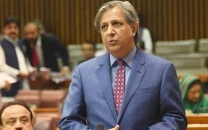
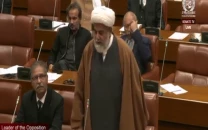
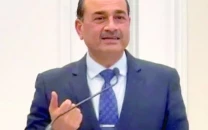

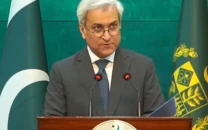












COMMENTS
Comments are moderated and generally will be posted if they are on-topic and not abusive.
For more information, please see our Comments FAQ